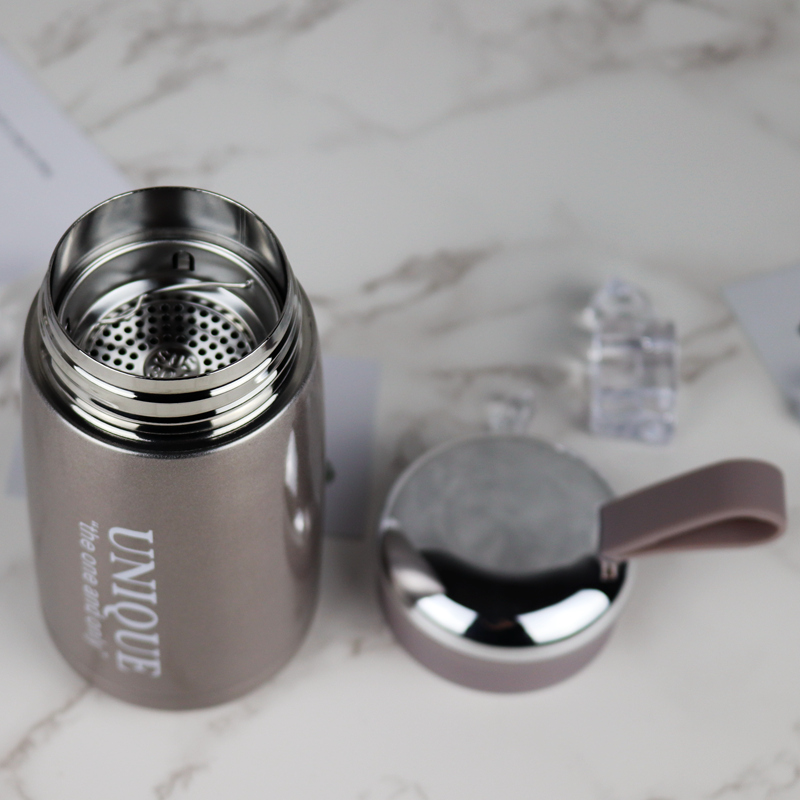304 stainless steel is a common material among stainless steels, with a density of 7.93 g/cm³; it is also called 18/8 stainless steel in the industry, which means it contains more than 18% chromium and more than 8% nickel; it is resistant to high temperatures of 800℃, has good processing performance and high toughness, and is widely used in the industrial and furniture decoration industries and the food and medical industries. However, it should be noted that the content index of food-grade 304 stainless steel is more stringent than that of ordinary 304 stainless steel. For example: the international definition of 304 stainless steel is that it mainly contains 18%-20% chromium and 8%-10% nickel, but food-grade 304 stainless steel contains 18% chromium and 8% nickel, allowing fluctuations within a certain range and limiting the content of various heavy metals. In other words, 304 stainless steel is not necessarily food-grade 304 stainless steel.
The common marking methods on the market include 06Cr19Ni10 and SUS304, of which 06Cr19Ni10 generally indicates national standard production, 304 generally indicates ASTM standard production, and SUS304 indicates Japanese standard production.
304 is a general-purpose stainless steel, which is widely used in the manufacture of equipment and parts that require good comprehensive performance (corrosion resistance and formability). In order to maintain the inherent corrosion resistance of stainless steel, the steel must contain more than 18% chromium and more than 8% nickel. 304 stainless steel is a grade of stainless steel produced in accordance with the American ASTM standard.
Physical properties:
Tensile strength σb (MPa) ≥ 515-1035
Conditional yield strength σ0.2 (MPa) ≥ 205
Elongation δ5 (%) ≥ 40
Sectional shrinkage ψ (%)≥?
Hardness: ≤201HBW; ≤92HRB; ≤210HV
Density (20℃, g/cm³): 7.93
Melting point (℃): 1398~1454
Specific heat capacity (0~100℃, KJ·kg-1K-1): 0.50
Thermal conductivity (W·m-1·K-1): (100℃) 16.3, (500℃) 21.5
Linear expansion coefficient (10-6·K-1): (0~100℃) 17.2, (0~500℃) 18.4
Resistivity (20℃, 10-6Ω·m2/m): 0.73
Longitudinal elastic modulus (20℃, KN/mm2): 193
Product composition
Report
Editor
For 304 stainless steel, the Ni element in its composition is very important, which directly determines the corrosion resistance and value of 304 stainless steel.
The most important elements in 304 are Ni and Cr, but they are not limited to these two elements. The specific requirements are specified by the product standards. The common judgment in the industry is that as long as the Ni content is greater than 8% and the Cr content is greater than 18%, it can be considered as 304 stainless steel. This is why the industry calls this type of stainless steel 18/8 stainless steel. In fact, the relevant product standards have very clear regulations for 304, and these product standards have some differences for stainless steel of different shapes. The following are some common product standards and tests.
To determine whether a material is 304 stainless steel, it must meet the requirements of each element in the product standard. As long as one does not meet the requirements, it cannot be called 304 stainless steel.
1. ASTM A276 (Standard Specification for Stainless Steel Bars and Shapes)
304
C
Mn
P
S
Si
Cr
Ni
Requirement, %
≤0.08
≤2.00
≤0.045
≤0.030
≤1.00
18.0–20.0
8.0-11.0
2. ASTM A240 (Chromium and Chromium-Nickel Stainless Steel Plate, Sheet, and Strip for Pressure essels and for General Applications)
304
C
Mn
P
S
Si
Cr
Ni
N
Requirement, %
≤0.07
≤2.00
≤0.045
≤0.030
≤0.75
17.5–19.5
8.0–10.5
≤0.10
3. JIS G4305 (cold-rolled stainless steel plate, sheet and strip)
SUS 304
C
Mn
P
S
Si
Cr
Ni
Requirement, %
≤0.08
≤2.00
≤0.045
≤0.030
≤1.00
18.0–20.0
8.0-10.5
4. JIS G4303 (Stainless steel bars)
SUS 304
C
Mn
P
S
Si
Cr
Ni
Requirement, %
≤0.08
≤2.00
≤0.045
≤0.030
≤1.00
18.0–20.0
8.0-10.5
The above four standards are just some of the common ones. In fact, there are more than these standards that mention 304 in ASTM and JIS. In fact, each standard has different requirements for 304, so if you want to determine whether a material is 304, the accurate way to express it should be whether it meets the 304 requirements in a certain product standard.
Product standard:
1. Labeling method
The American Iron and Steel Institute uses three digits to label various standard grades of forgeable stainless steel. Among them:
① Austenitic stainless steel is labeled with 200 and 300 series numbers. For example, some common austenitic stainless steels are labeled with 201, 304, 316 and 310.
② Ferritic and martensitic stainless steels are represented by 400 series numbers.
③ Ferritic stainless steel is labeled with 430 and 446, and martensitic stainless steel is labeled with 410, 420 and 440C.
④ Duplex (austenitic-ferrite), stainless steel, precipitation hardening stainless steel and high alloys with an iron content of less than 50% are usually named by patent names or trademarks.
2. Classification and grading
1. Grading and classification: ① National standard GB ② Industry standard YB ③ Local standard ④ Enterprise standard Q/CB
2. Classification: ① Product standard ② Packaging standard ③ Method standard ④ Basic standard
3. Standard level (divided into three levels): Y level: International advanced level I level: International general level H level: Domestic advanced level
4. National standard
GB1220-2007 Stainless steel bars (I level) GB4241-84 Stainless steel welding coil (H level)
GB4356-2002 Stainless steel welding coil (I level) GB1270-80 Stainless steel pipe (I level)
GB12771-2000 Stainless steel welded pipe (Y level) GB3280-2007 Stainless steel cold plate (I level)
GB4237-2007 Stainless steel hot plate (I level) GB4239-91 Stainless steel cold belt (I level)
Post time: Sep-11-2024
